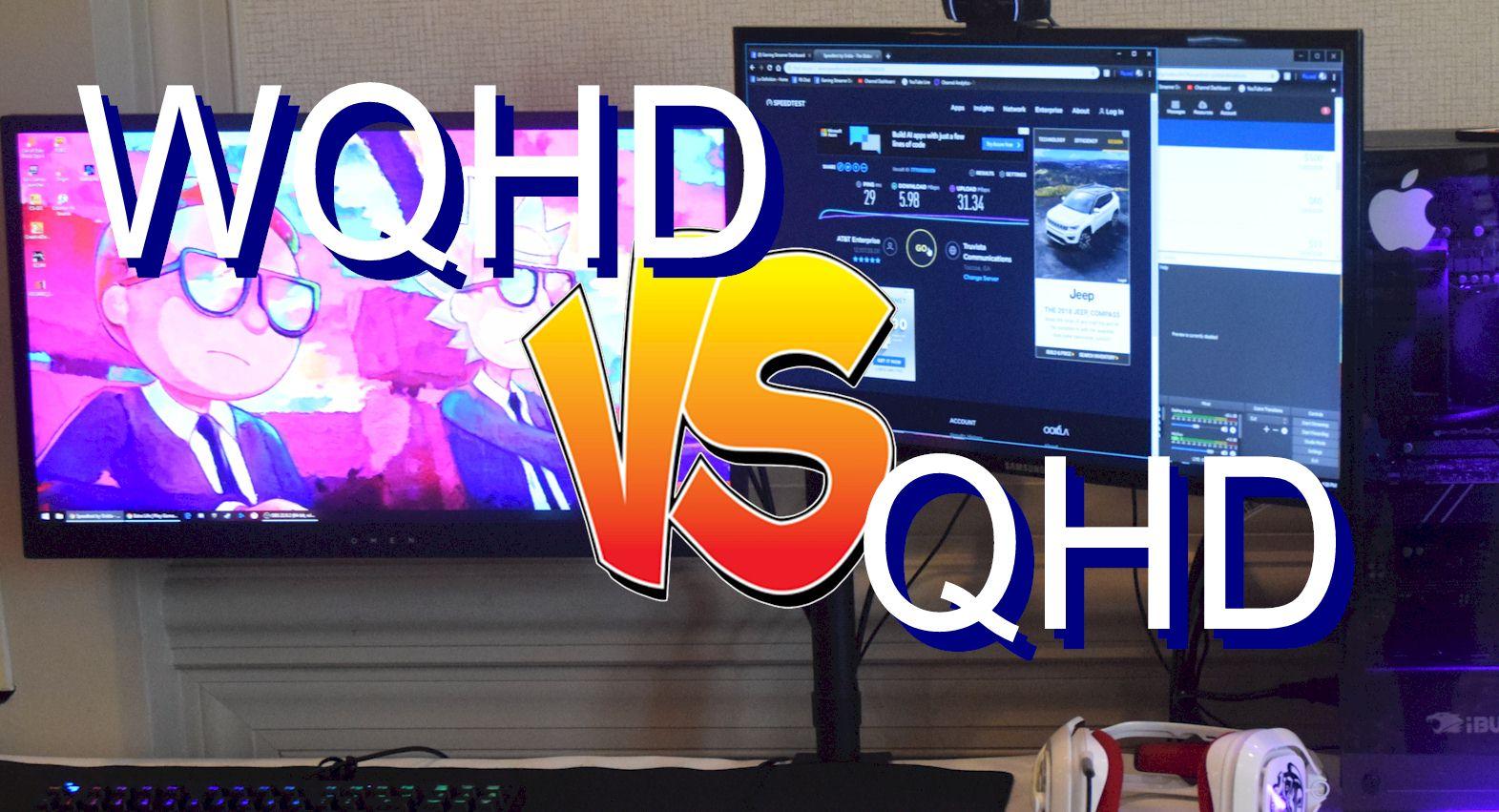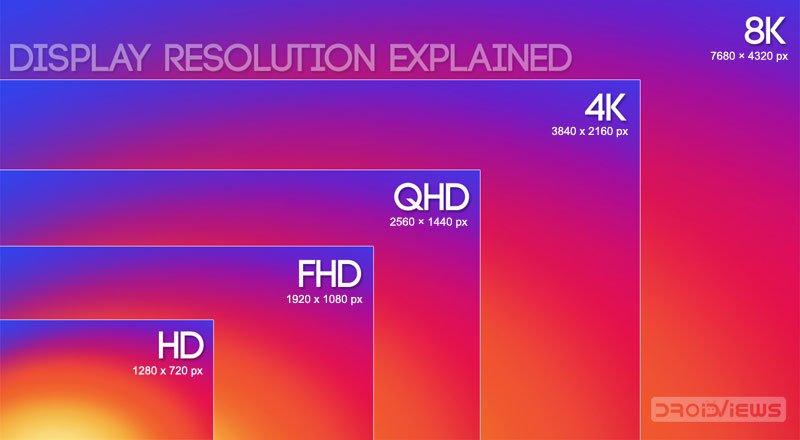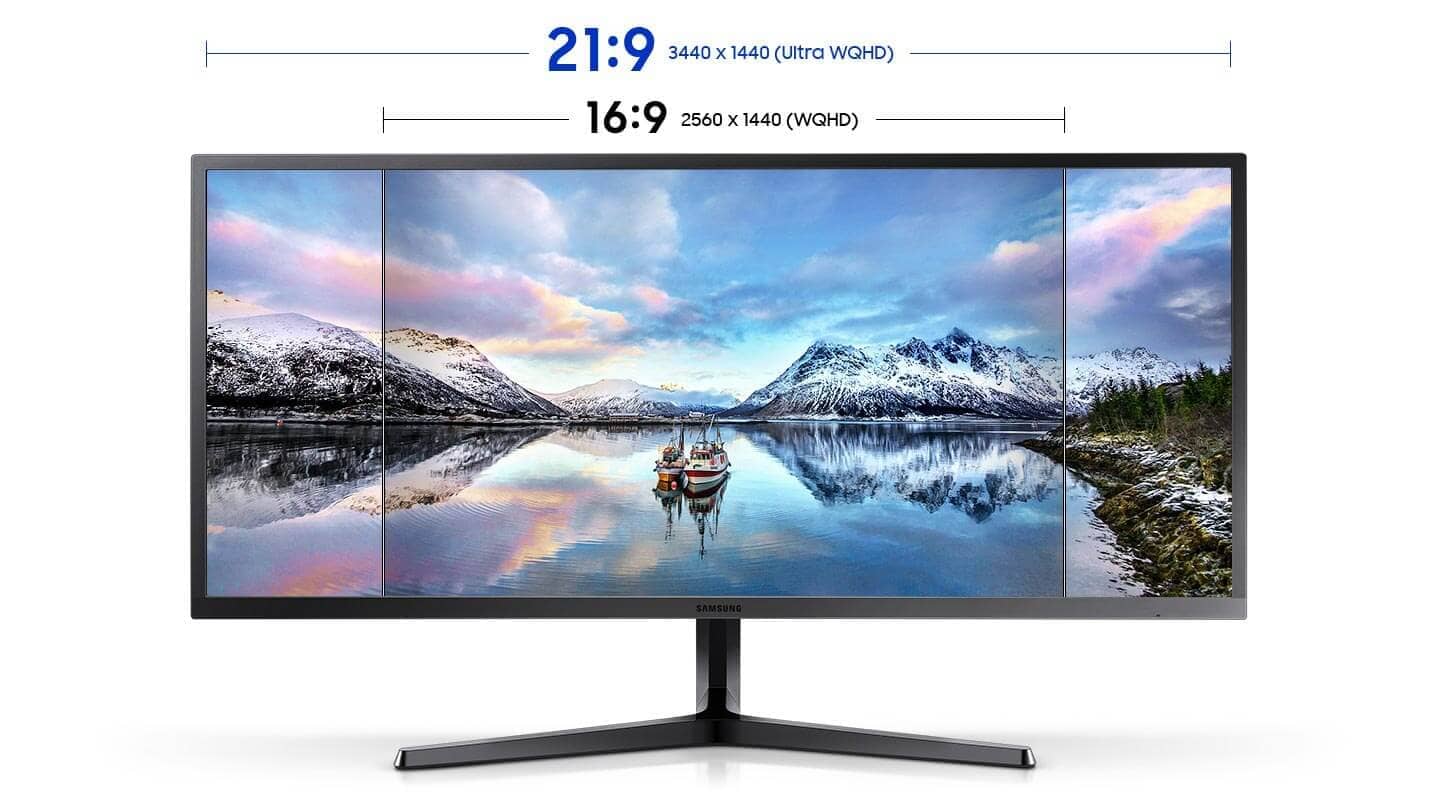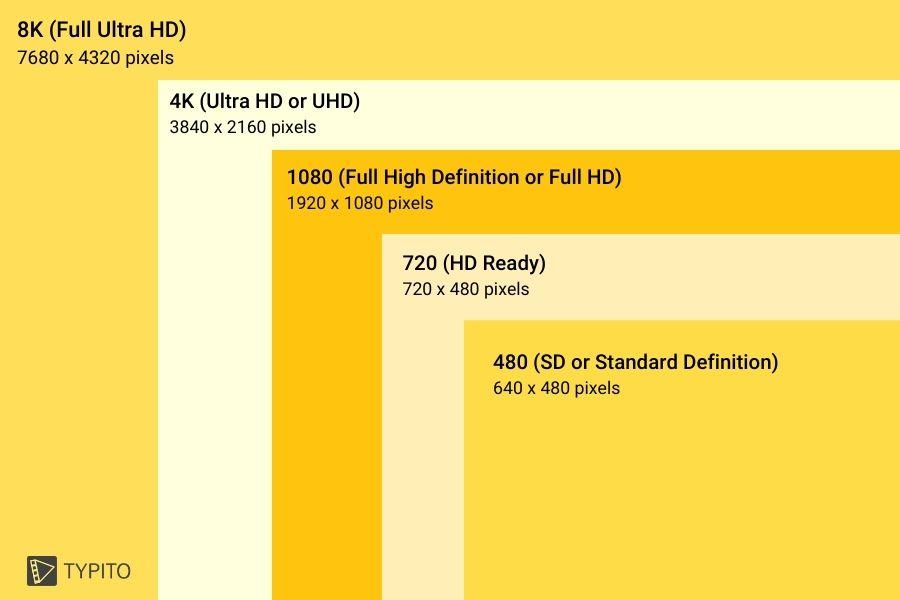Welcome to our guide – WQHD vs QHD.
Nowadays, there are many different types of screens out in the market.
One thing that everybody looks for when choosing their screen is its resolution – WQHD or QHD? Today we’ll give you an overview of how these two resolutions compare and what they can offer each person who purchases one!
The resolution of 1440p is also called QHD or WQHD and it has been around since 2014.
This means that the pixel density will be at least 2K, but sometimes more depending on how many extra pixels there are in each vertical line you see when looking at something closely.
Resolution determines the sharpness of an image, higher resolutions offer greater detail and clarity. QHD, or 1440p (with 1080 x 1920) provides four times as much definition vs 720p resolution which is standard HD quality (1280×720).
Higher resolutions are more expensive and can be challenging to view on screens that aren’t 27 inches or larger.
Also check out our guide on the best monitors for eye strain.

What is QHD?
The QHD resolution or Quad HD display is a welcome addition to the laptop world, as it offers better picture quality and detail than before.
The entry-level 1440-pixel resolution has been dropped down beneath this new standard for higher fidelity displays to make your viewing experience more immersive across all types of media sources like video games or movies on Netflix!
It’s important to remember that not all 1440p and Quad HD displays are created equal. While they may be collectively referred to as “1440p” or “QHD Resolution” there can be slight differences in resolution and image quality between them.
So, when shopping for a new monitor, make sure to do your research and choose the right one.

What is WQHD?
Wide Quad High Definition is the type of monitor that has a wide, high-definition panel. It’s perfect for those who want to see everything in their peripheral without any distortion or loss of quality!
The term is a bit of an umbrella for several resolutions. Underneath the 1440 Pixel and 2K auspices respectively, we find 1080p TVs as well!
The term “WQHD” is often used to describe 2560 horizontal pixels and 1440 vertical monitors. This means they have more than 16:9 width, but less height compared to UHD (3840 x 2160) which has an 8 Cinematic Vision Height rather than 4″.

Common Display Resolutions
- -1366×768 (720p)
- -1440×900 (900p)
- -1600×900 (1080p)
- -1920×1080 (1080i or 1080p)
- -2560×1440 (1440p or WQHD)
- -3840×2160 (4K UHD or UHDTV1)
- -5120×2880 (5K or Ultra HD)
- -7680×4320 (8K UHD or UHDTV2)
To find the best display resolution for you, it is important to understand the difference between WQHD and QHD.
Both resolutions offer a higher quality experience than regular HD, but they come with different pixel densities.
This means that they can be tailored for different needs, such as increasing text size on documents or making web pages easier to read without losing any detail.
So, which is the best resolution for you? It depends on your needs. If you want a higher-quality experience for gaming or watching movies, then WQHD is the way to go. If you’re looking for a resolution that is easier on your battery and won’t break the bank, then QHD is the better option.
Comparison Between WQHD vs QHD
WQHD stands for Wide Quad HD, and it has a resolution of 1440 pixels on the horizontal side. This means that each pixel is a distance apart from another one by 15 degrees instead there being just two dimensions like other screens which have only width or height but not both at once!
The difference between QHD and WQHD is like comparing a basketball court to an entire soccer field. The higher resolution of the former means more detail can fit onto one screen, but it also makes objects seem smaller when they’re far away from you – kind of similar to how close-up photos sometimes appear larger than their actual size because we see all those tiny little pixels fill up our vision at once!
You may have noticed that some screens are large while others seem tiny.
The reason for this difference is due to their screen resolutions, which can be seen below in the table comparing WQHD (2560 x 1440) against QHD (3840 X 2160).
1. Resolutions
If you look at the table above, it’s clear that while both have resolutions of 3440 horizontally per unit (inch), only one has frames-per inch (FPS).
This means objects on either wider or taller display will seem clearer than those same sized items seen through lower pixel density displays such as 720p or 1080I.”
The 880 pixels found within these high-resolution panels make up most of their advantage, so if you have two monitors which are both equal in size but sporting different resolutions then your Widescreen game will be more visible on the sharper screen with greater detail!

2. Price
The difference in price between a 34-inch WQHD monitor and an almost identical QHD resolution model can be as much as 100 dollars.
This may not sound like such a lot but when you’re looking to buy your first high-definition display, this could save you hours of research!
Whether you’re on a tight budget or looking to get the best possible quality at your price range, there are wide resolutions for both QHD and WQHD screens. If money is no object, then go with an HDR-ready 4k display.
However, if it’s more important that content looks good even up close than what kind of panel technology is used (LCD vs OLED) – choose wisely!
Generally, Most 4K monitors come with a WQHD display. You can anytime check out it.
3. Refresh Rate
The refresh rate is how often the image on your screen is refreshed, and it’s measured in hertz (Hz). A higher number means that the picture will be drawn more times per second, resulting in a smoother experience.
For general users, the extra frames-per-second will not make much of a difference; however, it is something to keep in mind if you’re looking for a monitor that can be used for both gaming and work.”
The main things to take away are that WQHD has a higher resolution than QHD, resulting in a clearer image.
It’s important to keep in mind the refresh rate when choosing between the two as this will affect how smooth your experience is.
And finally, remember that WQHD monitors are more expensive than their QHD counterparts!
Similarities between WQHD and QHD
While there are some important differences to take into account when choosing between WQHD and QHD, there are also a few similarities.
Firstly, both have the same number of pixels horizontally. Secondly, both resolutions will look great on a TV or monitor up to around 32 inches.
Finally, at a standard viewing distance, it can be hard to tell the difference between the two!”
When it comes to resolution, WQHD offers a clearer picture than QHD.
It’s important to keep in mind the refresh rate when choosing between the two as this will affect how smooth your experience is.
Is WQHD Better Than QHD?
WQHD (Wide Quad High Definition) and QHD (Quad High Definition) are both types of display resolutions commonly used in computer monitors, laptops, and other electronic devices.
The difference between WQHD and QHD lies in their pixel density and aspect ratio.
WQHD has a resolution of 2560×1440 pixels, which is 1.77 times more pixels than QHD’s resolution of 1440×2560 pixels.
This means that WQHD has a higher pixel density and can display more details and sharper images than QHD.
Additionally, WQHD has a wider aspect ratio of 16:9, which is better suited for multimedia applications like watching videos or playing games.
In terms of practical applications, WQHD is generally considered better than QHD.
The increased pixel density of WQHD makes text, images, and videos look crisper and more detailed.
This can be particularly important for tasks that require fine detail work, such as photo or video editing.
The wider aspect ratio of WQHD can also provide a more immersive viewing experience for gaming or watching movies.
However, it’s worth noting that WQHD displays can be more expensive than QHD displays, and may require more powerful hardware to drive them.
Additionally, some users may prefer the portrait orientation of QHD displays for certain tasks, such as coding or reading long documents.
Frequently Asked Questions – WQHD vs QHD
Is WQHD good for gaming?
Yes, WQHD is a great resolution for gaming. It provides a balance between high-quality graphics and performance.
The increased pixel density and wider aspect ratio of WQHD displays make the gaming experience more immersive and enjoyable.
Additionally, many modern graphics cards are capable of running games at WQHD resolution with high frame rates.
Are WQHD monitors worth it?
Whether WQHD monitors are worth it or not depends on individual needs and preferences.
WQHD displays offer higher pixel density and wider aspect ratio than QHD displays, making them better for multimedia applications and gaming.
However, they can be more expensive and require more powerful hardware to run effectively.
If you prioritize image quality and have the budget and hardware to support it, then WQHD monitors can be worth it.
Does WQHD use more battery?
WQHD displays require more power than lower resolution displays, which could result in slightly shorter battery life for portable devices such as laptops or tablets.
However, the difference in power consumption between WQHD and lower resolution displays is usually not significant enough to be a major concern.
Is WQHD equal to 4K?
No, WQHD is not equal to 4K. 4K refers to a resolution of 3840×2160 pixels or higher, while WQHD has a resolution of 2560×1440 pixels.
4K displays offer significantly higher pixel density than WQHD displays, which can result in even sharper and more detailed images.
Is Full HD better than WQHD?
Full HD (1920×1080 pixels) has a lower resolution than WQHD, so WQHD is generally considered better in terms of image quality and detail.
However, Full HD displays can be more affordable and require less powerful hardware to run, making them a good choice for budget-conscious users or for those who prioritize battery life on portable devices.
Conclusion
So, what’s the difference between WQHD and QHD? In a nutshell, WQHD has a higher resolution than QHD, resulting in a clearer image.
It’s important to keep in mind the refresh rate when choosing between the two as this will affect how smooth your experience is.
While both WQHD and QHD are high-quality display resolutions, WQHD is generally considered better due to its higher pixel density and wider aspect ratio.
However, the choice ultimately depends on the specific needs and preferences of the user.
